How to Cut the Cost of Your New School Building
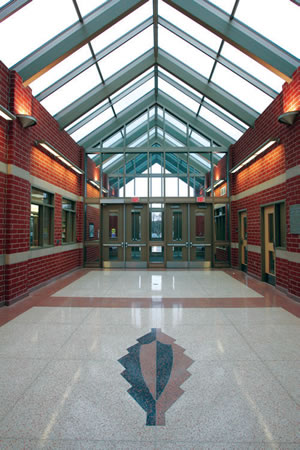
PHOTOS COURTESY OF FANNING HOWEY
When evaluating responses to bid requests, facility managers often select the lowest qualified bid. It makes perfect sense. Why would anyone pay more — in taxpayer dollars — than necessary?
In fact, some school facility managers are discovering the utterly anti-intuitive concept that paying more to build a school can reduce its overall total cost of ownership (TCO).
“A building won’t live out its planned life cycle without spending on maintenance and replacement equipment,” says Carl Baxmeyer, director of the solutions group based in the South Bend, Ind., offices of Fanning Howey, an architecture, engineering and design firm with offices across the country.
“Districts must budget for new furnaces, new roofs and other capital expenses,” continues Baxmeyer. “These longterm costs will eat you up.”
Baxmeyer also recommends changing the way initial material costs are evaluated in light of TCO.
THE POWER OF TCO ANALYSIS
Would you rather have marble floors or vinyl composition tile floors? That’s easy. Everyone would rather have marble floors. Then again, according to the Tile Council of North America, marble floors cost $21 per square foot to install. Vinyl composition tile (VCT) costs $3.91 per square foot to install. Comparing those installation costs makes it impossible to choose marble. Right?
Right. VCT is cheaper than marble up front. Up front comparisons are incomplete, however. Now consider the total cost of ownership.
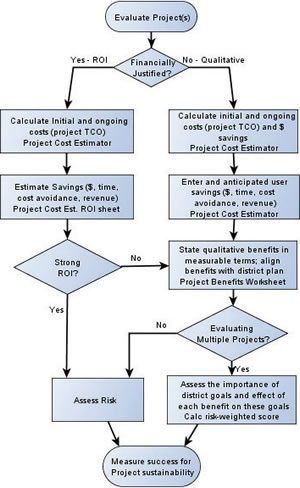
DATA TAKEN FROM THE TILE COUNCIL OF NORTH AMERICA
According to the Tile Council, a marble floor costs $0.61 per square foot per year to maintain, and it will last for 50 years. The 50-year maintenance cost for a marble floor, then, totals $30.50 per square foot. Add to that the installation cost of $21 per square foot and the total cost of ownership of a marble floor equals $51.50 per square foot
By contrast, VCT costs $1.85 per square foot per year to maintain and lasts only 10 years. The 10-year maintenance cost is $18.50. The 10-year maintenance cost plus the $3.91 per square foot installation cost totals $22.41 per square foot in total cost of ownership.
Of course, to reach the 50-year life cycle of marble, you will need to install five vinyl composition tile floors. Five time $22.41 equals $112.05 per square foot for the total cost of owning a vinyl composition tile floor for 50 years.
At a TCO of $51.50 per square foot over 50 years, marble costs less than half of what a vinyl composition tile floor costs.
The same is true when comparing terrazzo and VCT.
During the design of a new middle school for Dowagiac Union Schools in Dowagiac, Mich., the district had to decide on a flooring material for the 2,500-square-foot main corridor. The candidates were VCT and terrazzo.
The Fanning Howey analysis found that the district would save $61,575 by installing VCT. But over a 40-year life cycle, the district would save $45,975 by installing and maintaining terrazzo.
In the end, VCT floors are just too expensive.
TCO THROUGH THE ROOF
Not long ago, Fanning Howey carried out a building assessment for Cabarras County Schools in North Carolina. “What jumped out of the assessment was the durability of the roofs,” Baxmeyer says. “They should have been getting life cycles of 30 years for roofs, but they were only getting 20 years.
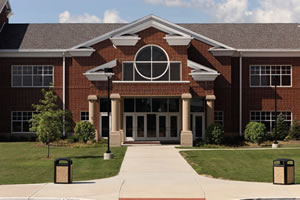
PHOTOS COURTESY OF FANNING HOWEY
“When we evaluated the additional cost of higher-quality roofing materials compared to the longer lifecycle, it became apparent that the change would lower the overall cost of ownership by extending the life of the roofs.”
TECHNOLOGY, TOO
While school facility managers may be familiar with the total cost of ownership concept in relation to school buildings, it is interesting to note that information technology professionals originally developed the basic concept for the overall technology environment and for discrete technology projects.
“The classical definition of TCO looks at the entire computing environment across a school district,” says Richard Kaestner, SmartIT project director at the Consortium for School Networking (CoSN).
The main components of technology TCO, continues Kaestner, are end-user computers, tablets, printers and other hardware, the server system, the networking equipment including routers, cabling, wireless hot spots and external services such as software as a service (SaaS).
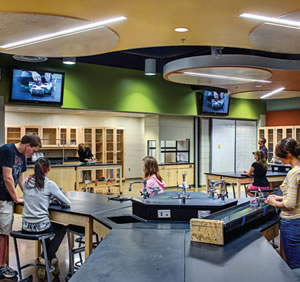
PHOTOS COURTESY OF FANNING HOWEY
Benefits vs. Costs. Some school facility managers are discovering the anti-intuitive concept that paying more to build a school can reduce its overall total cost of ownership (TCO).This relates to pieces of the facility, such as roofs and flooring and even is a factor when looking at technology, HVAC systems and other capital expenses.
Another major component is support — the direct IT department labor and outside firms that the school hires for support. In some districts, a math teacher may spend part of his or her time providing computer support. That teacher’s time counts as part of TCO.
“A component that everyone forgets is indirect labor,” says Kaestner. “Indirect labor includes the time spent by administration and faculty learning to use newly acquired technologies. It also includes time spent dealing with technology issues. For instance, a teacher might spend an hour trying to get the printer to print a set of documents. That is lost productivity for the teacher and a technology TCO expense.”
Once you know the total technology cost to the enterprise, it becomes possible to manage the overall economic picture.
Suppose that a school district has the indirect labor equivalent of two teachers dealing full time with technology issues over the course of the school year. The combined salary of two teachers might be $120,000 to $160,000 per year.
The teachers are not technology experts. They have to work at it harder and longer than a trained technician, and they still can’t get it completely right. So the networks and computers are not functioning at an optimal level.
Why not replace those indirect costs with a $60,000 technician who will keep everything functioning in half the time at half the cost, while the teachers and administrators go back to doing their own jobs full time?
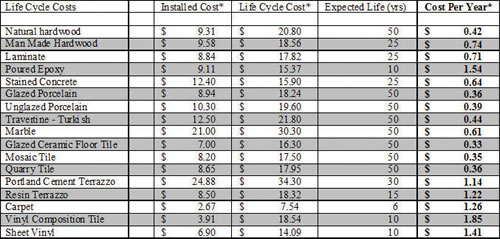
COURTESY OF COSN (THE CONSORTIUM FOR SCHOOL NETWORKING)
“Such a TCO analysis can also frame issues clearly when dealing with budget issues,” adds Kaestner. “Suppose you have to cut the budget. A TCO analysis will clearly show that cutting back on tech support will burden mostly unqualified end users with providing their own support.”
So where do you cut? TCO can total up the cost of service calls on old equipment that doesn’t integrate will with the evolving network. Perhaps it would be cheaper to buy new equipment, reduce maintenance needs and enable the district to get along with a smaller support staff.
PROJECT TCO
A sub-topic of TCO is called project TCO. “I try to separate overall TCO and project TCO,” Kaestner says. “Projects also have individual costs and benefits that a need to be evaluated.”
In the CoSN SmartIT initiative, Kaestner has developed a methodology and specific tools for evaluating the value of investment or VOI for a project. VOI adapts the return on investment or ROI concept to educational projects, which create educational benefits instead of financial profits.
A SmartIT strategy paper available at www.cosn.org outlines the VOI methodology. “This approach can be used to evaluate the comparative costs and benefits of two or more projects competing for the same funding, to sell a project internally, to articulate the costs and benefits of the project to constituents, and to later determine whether a project should be sustained,” says the paper.
The first step in calculating VOI is to determine the project TCO. Identify and total all of the costs related to the project including initial purchases, new hires, if any, as well as training and implementation costs. Set an amortization schedule for equipment. Typically, says Kaestner, the amortization period is no more than five years.
Don’t forget indirect costs such as those spent by users handling technology problems. Indirect costs are large. They can be as large or larger than direct costs. If they aren’t factored in, the analysis will draw incorrect conclusions.
CoSN provides a project cost estimator tool to help with this step.
The second step calculates anticipated savings and revenues. The project cost estimator and a VOI project benefits worksheet, also provided by CoSN, can help with this step.
In addition, the worksheet helps measure the “qualitative” benefits — instead of the dollar benefits — of the project by:
- Determining the projects goals and assigning a relative importance to each
- Aligning the project benefits with the appropriate goals
- Stating the anticipated project benefits in measurable terms
- Agreeing on the effect of each project benefit on the applicable goals and calculating a total qualitative benefits score
- Making a judgment about the probability of success and giving it a value.
Finally, the total qualitative score is multiplied by the probability of success, yielding a risk-weighted benefits score.
The SmartIT strategy paper goes into detail about setting measurable values.
VOI might sound much too theoretical, but again, it becomes useful when comparing one or more projects competing for the same funds. Projects with higher scores provide the greater benefits. By adding the score and the cost for each project, you can determine which will provide the most value for the dollar.
WHY NOW? HAS SOMETHING CHANGED?
Architects and technology consultants have been making the case for TCO for years — to little avail. Today, more and more facility and IT managers seem to be taking an interest. Why? What has changed?
“We talk about our TCO methodology when we first meet with clients,” says Fanning Howey’s Baxmeyer. “I think that facility managers, superintendents and board members are realizing today that they must look at long term costs.
“In addition, we have technology today that can automate the process of calculating TCO. We use a facilities capital planning software applications from a Boston-based company called VFA.”
There are actually two VFA applications: VFA Auditor collects the life cycle data on every building component. VFA facility imports the data and analyzes it. The completed analysis will tell you, for instance, how many years of life he roofs of the building across the district have left, when they will have to be replaced and the cost of the replacement.
“I’m a planner by profession,” says Baxmeyer. “Planners have been promoting the analysis of projects by looking at long term costs for years. I think that clients are beginning to buy into the idea more often because technology makes it easier to quantify the entire TCO.
“We used to do this for a couple of building components, but today we can provide the analysis for each building system. That makes the financial implications impossible to ignore.”
Maybe your TCO should be higher — or maybe lower.
A low TCO isn’t necessarily the goal. A 19 TCO can be too high or too low. By evaluating the individual components, you might see that your technology maintenance costs are too low and will likely shorten the life of certain pieces of equipment.
You might also find that energy costs are too high, thanks to older and less energy-efficient heating, ventilating and air-conditioning equipment that should be replaced.
Wielded with skill, TCO is a tool that can bring budgets into proper balance in every school and administration building across your school district.
This article originally appeared in the issue of .